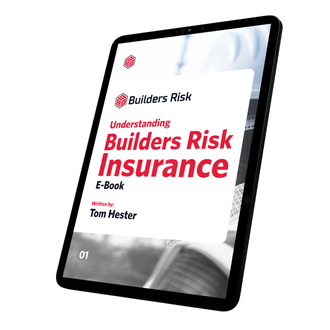Protect Your New Hampshire Build: Builders Risk Basics
Ensure Your New Hampshire Construction Projects Are Protected: Rely on BuildersRisk.net for Builders Risk Insurance!
Call Us Now! and Get your Builders Risk Insurance Today!
Builders Risk Insurance for New Hampshire
In the Granite State, protecting construction projects from unforeseen risks is crucial for contractors, construction companies, and homeowners alike. Builders Risk Insurance in New Hampshire plays a vital role in safeguarding new home construction and other building endeavors against potential setbacks. From severe weather events to vandalism coverage, this specialized insurance offers peace of mind to those involved in construction projects across the state's diverse landscape.
Understanding the basics of builders risk insurance has a significant impact on the success of construction ventures in New Hampshire. This article delves into the essentials of this coverage, exploring its importance for different stakeholders, factors affecting insurance costs, and the claims process. Whether you're a homeowner embarking on a renovation or a contractor managing multiple projects, grasping the fundamentals of builders risk insurance is key to protecting your investment and ensuring a smooth building experience in the Granite State.
Builders Risk Insurance for Different Stakeholders
- Essential Coverage: Builders risk insurance is crucial for homeowners embarking on construction projects in New Hampshire. If a homeowner owns the land and hires a builder, they typically carry the builder's risk insurance.
- Protection Scope: This insurance protects the construction project from financial losses, safeguarding the homeowner's investment.
- Insurance Options: Many New Hampshire home insurance companies offer builders risk coverage for new single-family home construction projects.
- Renovations and Additions: For smaller renovations where homeowners reside in the home during work, existing homeowners insurance may suffice. However, for significant renovations and additions, consulting with an insurance agent is advisable to ensure adequate coverage.
- Crucial Coverage: Builders risk insurance is essential for contractors in New Hampshire, providing protection for buildings and structures under construction.
- Scope of Protection: Covers direct physical loss or damage to covered property, including building materials, supplies, and equipment on-site, in transit, or at other locations.
- Additional Coverages: Policies may include coverage for scaffolding, construction forms, temporary structures, and debris removal in the event of a covered loss.
- Risk Mitigation: This specialized insurance meets the risk mitigation needs of construction companies and contractors.
- Beneficial Coverage: Subcontractors in New Hampshire also benefit from builders risk insurance, which protects against direct physical loss or damage to covered property during construction.
- Coverage Importance: Essential given the diverse terrain and severe weather events that can impact construction projects in the state.
- Insurance Responsibility: Subcontractors should ensure they are adequately covered under the primary builders risk policy or consider obtaining their own coverage to protect their interests in the project.
- Financial Protection: Lenders financing construction projects in New Hampshire often require proof of builders risk insurance to protect their financial interests.
- Coverage Scope: Builders risk policies can include coverage for loss of income and additional expenses if project completion is delayed due to property damage.
- Risk Mitigation: Helps mitigate the risk of financial losses due to construction delays or unforeseen circumstances, ensuring the project's financial stability.
Factors Affecting Builders Risk Insurance Cost
- Impact: Higher project values lead to higher premiums.
- Coverage Limits: Policies can offer multimillion-dollar coverage, sometimes over $10 million per incident.
- Influence: Different construction types and classifications affect costs
- Example: Frame structures might have a $5 million limit, while joisted masonry structures could have a $10 million limit.
- Site Size: Larger commercial sites generally cost more to insure than residential properties.
- Risk Areas: Premiums are higher in areas with elevated crime rates or natural disaster risks.
- Example: Coastal projects might face surcharges due to hurricane risks.
- Timeframe: Longer projects can increase costs.
- Coverage Alignment: Ensure policy duration matches the construction timeline to maintain adequate coverage.










